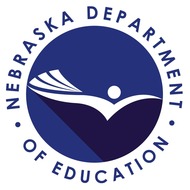
(View Complete Item Description)
Technology Enhanced Elementary Spanish Program -
TEESP World Language Program Introductory Course for Grades 1 – 6 2007 – 2010
Artwork for lessons created by Evelyn Schluckebier 2008, 2009. All drawings are copyrighted 2008 with Creative Commons License. Drawings may be shared but not sold, as long as any derivative works are also shared under a similar license.
Project evaluation: Lisa Knoche, UNL Research Center Project funded by Foreign Language Assistance Grant, 2007 - 2010 Program Information The Technology Enhanced Elementary Spanish Program (TEESP) was a three-year collaborative effort by ESU #16, ESU #15 and area schools. The program is funded by a FLAP (Foreign Language Assistance Program) grant. Project Information The project design was developed by a team of high school Spanish teachers. Known as the WLLC team (World Language Learning Community) team these teachers have worked together for several years to improve the teaching strategies in language education for area schools. They have all participated in various professional development opportunities, including Teaching Proficiency through Reading and Storytelling (TPRS) with Susan Gross and Karen Rowan, Comprehensible Input Reading Strategies with Jason Fritze and Literacy Strategies delivered by staff from Nebraska Department of Education, World Languages Department.
Project funded by Foreign Language Assistance Grant, 2007 - 2010
Program Information
The Technology Enhanced Elementary Spanish Program (TEESP) was a three-year
collaborative effort by ESU #16, ESU #15 and area schools. The program is funded by a
FLAP (Foreign Language Assistance Program) grant.
Project Information
The project design was developed by a team of high school Spanish teachers. Known
as the WLLC team (World Language Learning Community) team these teachers have
worked together for several years to improve the teaching strategies in language
education for area schools. They have all participated in various professional
development opportunities, including Teaching Proficiency through Reading and
Storytelling (TPRS) with Susan Gross and Karen Rowan, Comprehensible Input Reading
Strategies with Jason Fritze and Literacy Strategies delivered by staff from Nebraska
Department of Education, World Languages Department.
Material Type:
Assessment,
Homework/Assignment,
Lesson,
Lesson Plan,
Unit of Study
Author:
NDE Digital Learning




















